George Betjemann & Sons
In 1812 and at the age of 14, George Betjemann started apprenticing as a cabinet maker with his uncle, Gilbert Slater at his premises on Carthusian Street, London. In 1834, George then joined his father-in-law, William Merrick’s cabinet making business on Red Lion Street, Clerkenwell, London. George brought his sons, George William Betjemann (his eldest) and John Betjemann (grandfather of poet, Sir John Betjeman), to apprentice with him from 1848. He began his own business at 6 Upper Ashby Street, Clerkenwell, London, and with his two sons having completed their apprenticeships in 1855, expanded to 7 Upper Ashby Street shortly after.
In 1859, George moved into 36 Pentonville Road, London (their new family home and business residence) where he continued his business, now called George Betjemann & Sons, alongside his two sons. George William never married but instead was ‘married’ to his work, being a true artist and perfectionist. Their work was on display at the International Exhibition of 1862, and the International Exposition of 1867 in Paris.
By 1871, they had expanded their residence to incorporate 38 Pentonville Road and were employing 119 people. Records show that by 1875 a further incorporation of 40 Pentonville Road was undertaken. George died in 1886 at the age of 88 and George William and John ran George Betjemann & Sons in partnership until John’s death in 1893. George William then established a business partnership with John’s sons, John George Betjemann and Ernest Edward Betjemann. Around 1896, John George and Ernest Edward established an offshoot company called Betjemann Brothers, based at 2 Newcastle Place, Clerkenwell, London. This company ran alongside George Betjemann & Sons until they were merged in 1903, following the death of George William. In 1909, they became a limited company, known as George Betjemann & Sons Ltd.
With Ernest’s son John (the future poet Sir John Betjeman) having no interest in carrying on the family business, George Betjemann & Sons Ltd finally wound up in 1939.

George Betjemann & Sons engraved brass manufacturer’s plate from an antique jewellery box in coromandel with Betjemann Patent mechanism.

George Betjemann & Sons patent stamp plate from an Asprey antique jewellery box in coromandel with Betjemann Patent mechanism.
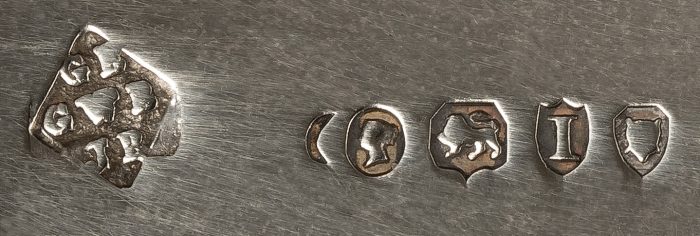
George Betjemann & Sons silver hallmark. The ‘GB’ refers to George Betjemann, the ‘GWB’ refers to George William Betjemann, and the ‘JB’ refers to John Betjemann.
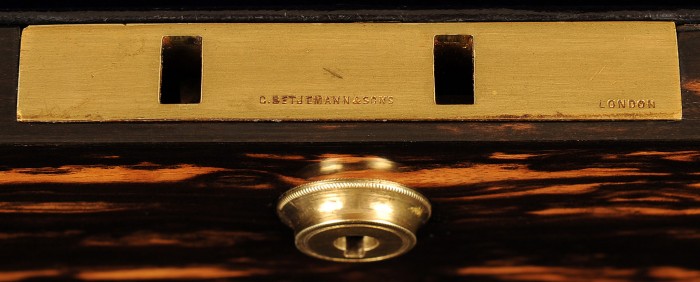
‘G.Betjemann & Sons – London’ stamped on a Bramah lock.
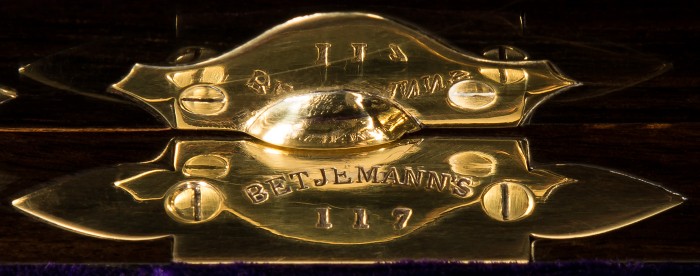
George Betjemann & Sons patent stamp plate from an Asprey antique jewellery box in coromandel with Betjemann Patent mechanism.
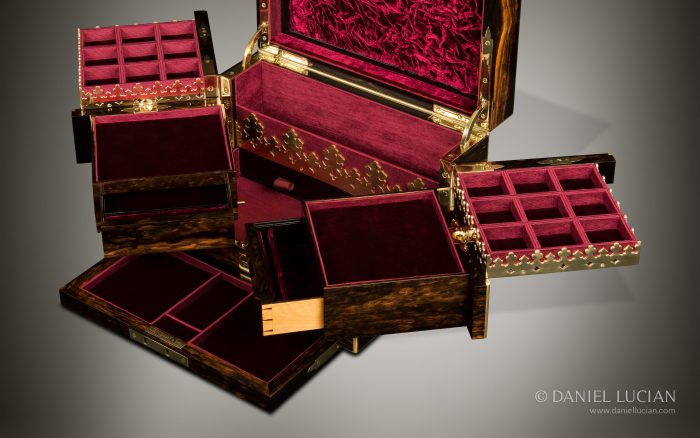
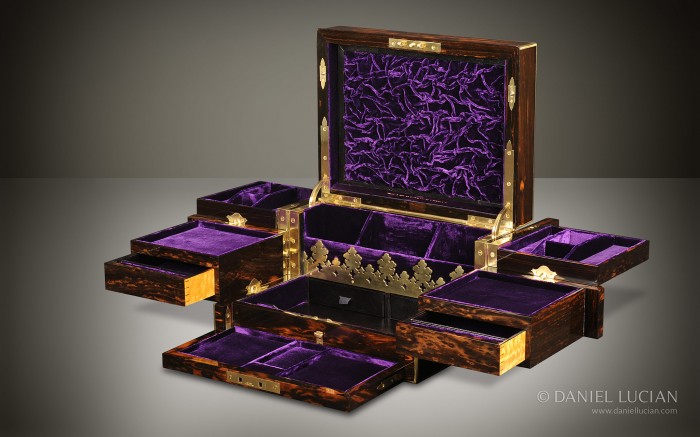
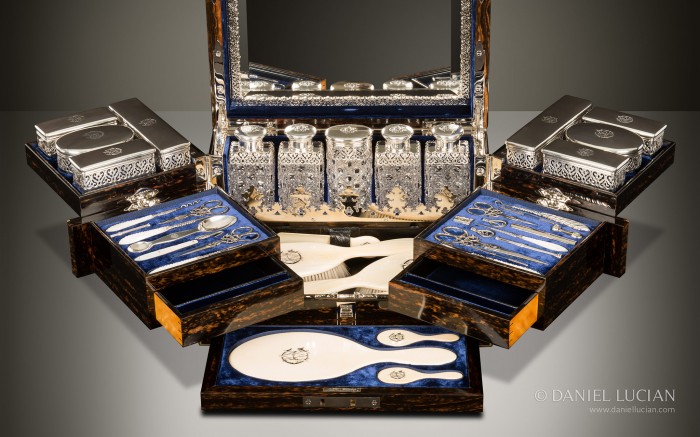
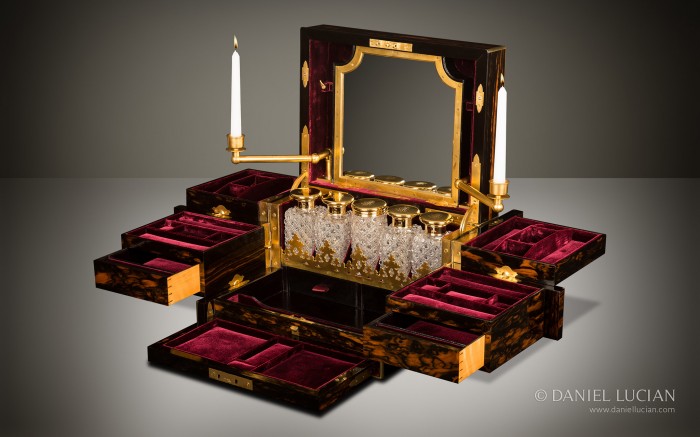
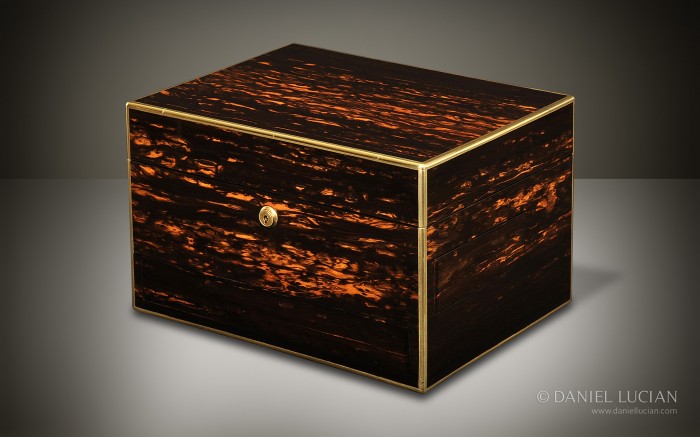
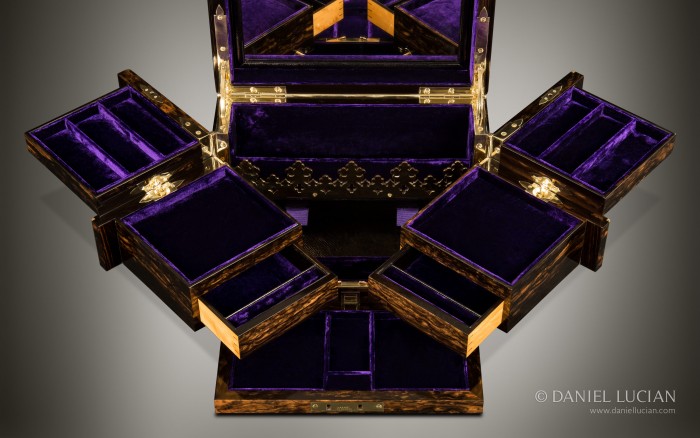
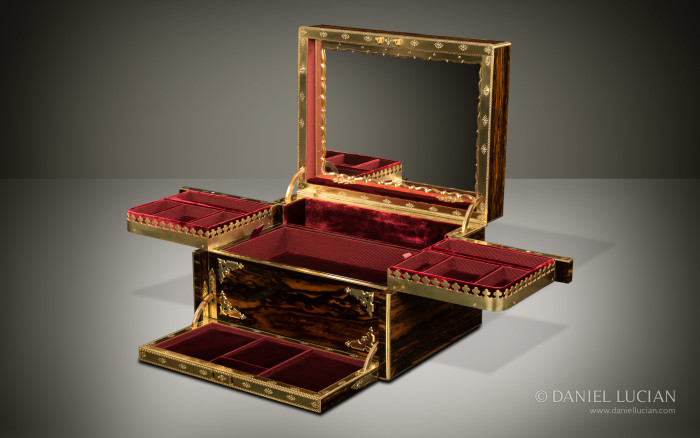
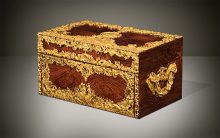 Price On Application
Price On Application